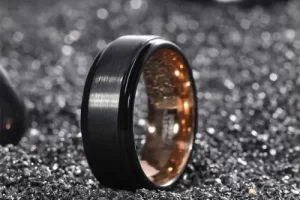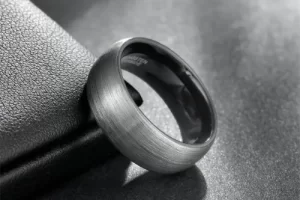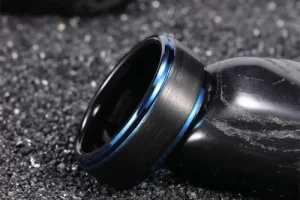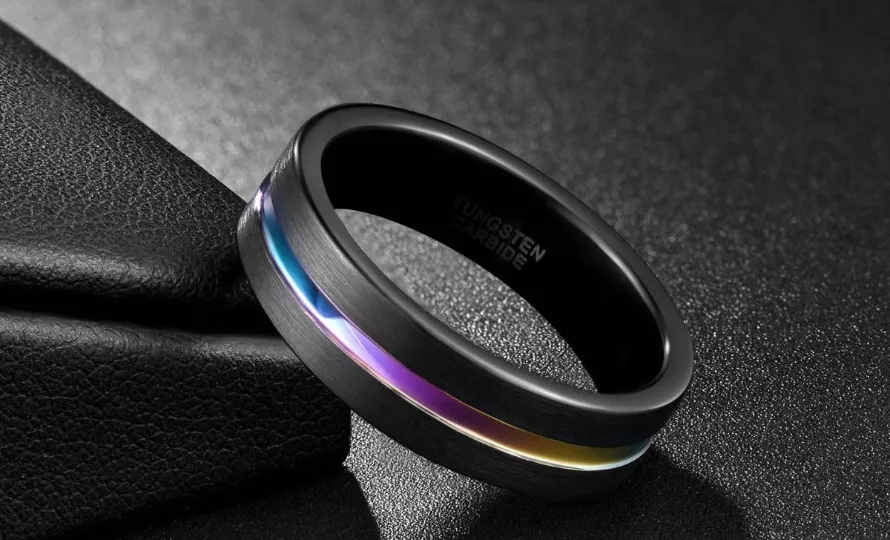Tungsten is a metal that many people surprisingly overlook, yet it has become indispensable in numerous modern-day applications. With an exceptionally high density and hardness, tungsten demonstrates unique physical properties that set it apart from other metals. But what exactly contributes to tungsten’s surprising heaviness? And what makes this dense metal so useful across various industries today?
The Origins of Heavy Metal: Tungsten’s History and Discovery
The story of tungsten begins in medieval times. Swedish chemists first discovered this durable gray-white metal in the mid-18th century. They named it “tung sten,” meaning “heavy stone” in Swedish due to its substantial weight, even in small quantities.
For over a century after its initial discovery, tungsten saw limited use. But that changed in 1860 when Spanish chemists first isolated the metal in its pure form using hydrogen and hydrochloric acid reduction. This pioneering work revealed tungsten’s potential commercial and industrial applications.
In the early 20th century, researchers began alloying tungsten with carbon and other metals. This produced hard tungsten carbides and steels ideal for machining, mining, and drilling technologies that were advancing rapidly at that time. Global demand for tungsten has continued to support modern high-tech, defense, manufacturing, lighting, and other industries today.

What Makes Tungsten So Heavy? Understanding Its Atomic Properties
Tungsten is a transition metal with the atomic number 74 and an atomic weight of approximately 183.84. It has one of the highest melting points among pure metals and the greatest tensile strength. But what truly makes tungsten heavy relative to its size is its atomic structure and density.
Each cubic centimeter volume of the tungsten atom contains over 19 grams of mass. By comparison, the same volume of iron, nickel, bronze, and sterling silver contains around 7.9, 8.9, 8.7, and 10.5 grams, respectively. As an element, tungsten atoms bond tightly in a body-centered cubic lattice crystalline structure. Along with intermolecular solid attractions, this gives the metal its exceptionally high density.
In its raw mineral form as wolframite, tungsten maintains this density but contains additional molecules contributing to its overall weight. When chemically isolated, the purity of the tungsten metal further accentuates its heaviness per unit volume compared to these mineral ores. In short, tungsten’s atomic properties enable compact mass far exceeding most other metals and minerals.
Unique Properties: Strength, Durability and Resistance to Corrosion
Beyond high density, tungsten demonstrates several other useful properties:
- Great tensile strength– Pure tungsten has a tensile strength of over 1600 MPa, exceeding that of tin, lead and even structural steel by multiples. This allows tungsten wires, for example, to withstand significant pulling forces.
- Hardness and durability– On the Mohs scale, tungsten scores between 8 and 9 in mineral form and around 7.5 as a pure metal, which is comparable to titanium and many hardened steels. This hardness translates to durability, wear-resistance and the capacity to retain shape under pressure.
- High resistance– Tungsten resists corrosion and attack from oxygen, acids and alkalis. It also exhibits excellent electrical and thermal conductivity and stability under high temperatures needed for applications like light bulb filaments and rocket nozzles.
Tungsten alloys that further improve strength, hardness and toughness have expanded applications for the pure metal. Common alloys include tungsten carbide with carbon or cobalt and tungsten steels alloyed with chromium, vanadium or other metals.

Tungsten’s Surprising Weight Gain Through Oxidation
Most metals undergo oxidation and become slightly heavier over prolonged exposure to oxygen and moisture. But research has shown tungsten can exhibit substantial density and weight increases in certain oxidizing conditions.
One study published in the Journal of the American Ceramic Society tracked weight changes in pure tungsten filaments at high temperatures under chemically controlled atmospheres. Researchers found that thin filaments exposed to just one atmosphere of oxygen pressure gained over 22% in weight due to oxidation over 500 hours.
In lower 200 atm oxygen environments, weight gain exceeded 140% of the original mass. Other experiments have seen up to 900% density increases under pure oxygen. This surprising propensity for enhanced oxidation contributes to tungsten’s reputation as an especially heavy metal.

Unique Applications – From Lightbulbs to Radiation Shielding
Thanks to its specialized properties, tungsten serves important functions across electronics, manufacturing, aerospace, defense, healthcare and numerous other industries today. To name just a few current applications:
- Filaments in incandescent, halogen, and vacuum light bulbs– Tungsten’s high melting point and durability under heat create bright, long-lasting filaments.
- Radiation shielding– Tungsten’s density makes it an ideal material against X-ray and gamma radiation in medical and aerospace applications. Its alloys are commonly used in radiation therapy machines.
- High-temperature furnaces– Tungsten heating elements withstand temperatures exceeding 3,500°C needed for applications like chemical vapor deposition and sapphire crystal production.
- Wear-resistant tools– Tungsten carbide and other alloys are tough, durable materials manufactured into cutting tools, drill bits, dies, and other rugged equipment. TC tips, for example, resist abrasion in mining and stone drilling.
- Substrates in electronics fabrication–Tungsten’s electrical properties have enabled its use in integrated circuit boards, heat sinks, and interconnects in wafer manufacturing, data centers and mobile devices.
In many modern applications, substitutes for tungsten are limited due to its specialized functionality. As a result, tungsten has become indispensable across numerous essential industries today despite its high costs.

Tungsten Jewelry’s Unique Properties – Beauty, Strength and Permanence
Beyond industrial and electronic uses, tungsten’s hardness, durability, scratch resistance, and beautiful luster also make it increasingly popular among jewelry designers and consumers.
Tungsten is commonly crafted into jewelry by mixing tungsten carbide or metallic tungsten powder with cobalt or nickel binders. This produces durable tungsten alloys that manufacturers can cut, shape, and polish into beautiful rings, watches, bracelets, and necklaces.
In particular, tungsten’s rise has been most pronounced in men’s wedding bands and rings. A tungsten carbide wedding band can exhibit double to triple the durability and scratch resistance compared to 18k gold, while exceeding the hardness of traditional 14k gold by multiple times. This strength allows tungsten wedding rings to retain their permanent polish and shape despite years of wear.
Additionally, tungsten carbide rates between 9 and 15 on the Mohs Scale, approaching diamond in hardness and surpassing other metals used in jewelry. Its gleaming, scratch-resistant surface sparkles permanently – ideal aesthetics for wedding and engagement rings to symbolize enduring marriages.
For consumers, this permanence means tungsten carbide jewelry often becomes heirlooms passed across generations instead of items periodically refashioned or replaced due to wear and damage. Unlike sensitive precious metals, tungsten’s durability allows it to withstand routine activities, harsh work environments and adventure travel while retaining its beauty and lasting shine.
Tungsten’s Growing Use in Modern Jewelry Design
Overall, tungsten offers the ideal balance of affordability, sturdiness and attractiveness to support growing adoption in fine jewelry. As Daniel Perlman – president of Los Angeles-based Triton Jewelry, one of the earliest tungsten jewelry pioneers – noted to JCKOnline:
“It’s a new category that fills a void – at a better price point than gold, yet priced significantly above sterling silver or platinum alternatives. Tungsten also fills the need for luxury items that support an active lifestyle.”
In recent years, this unique mix of beneficial attributes has fueled rising demand from jewelry designers and consumers for tungsten accessories. With increased marketing, availability, and visibility in retail channels, tungsten seems poised to become a standard metal across all jewelry types – from delicate bracelets to everyday fashion rings to elegant bridal sets.
And while gold and platinum maintain prestige in fine jewelry circles, tungsten is an affordable, innovative alternative metal that adds unique diversity to modern jewelry options. Thanks to clever designers, its use will likely expand across men’s and women’s collections for years.

Final Thoughts – Remarkable Density Underpins Wider Adoption
In closing, tungsten lives up to its “heavy stone” moniker across scientific properties and real-world applications. The metal’s exceptionally high density sets it apart from traditional industrial choices like steel, aluminum or titanium. For example, pure tungsten maximizes mass in the smallest volumes – kilometers of wire or radiation shield layers into centimeters of thickness.
This underlying density combines with specialized physical attributes to support tungsten’s utility across electronics, aerospace, machinery and other tech-forward industries today. Even in ornamental jewelry, tungsten’s compact heft enhances durability, shine, scratch protection and long-lasting beauty.
As designers and engineers discover new applications for this versatile material, tungsten’s star will likely continue rising across modern tech and consumer landscapes. In both aesthetics and functionality, tungsten’s surprising weight underpins growing adoption and indispensability in the 21st century.

